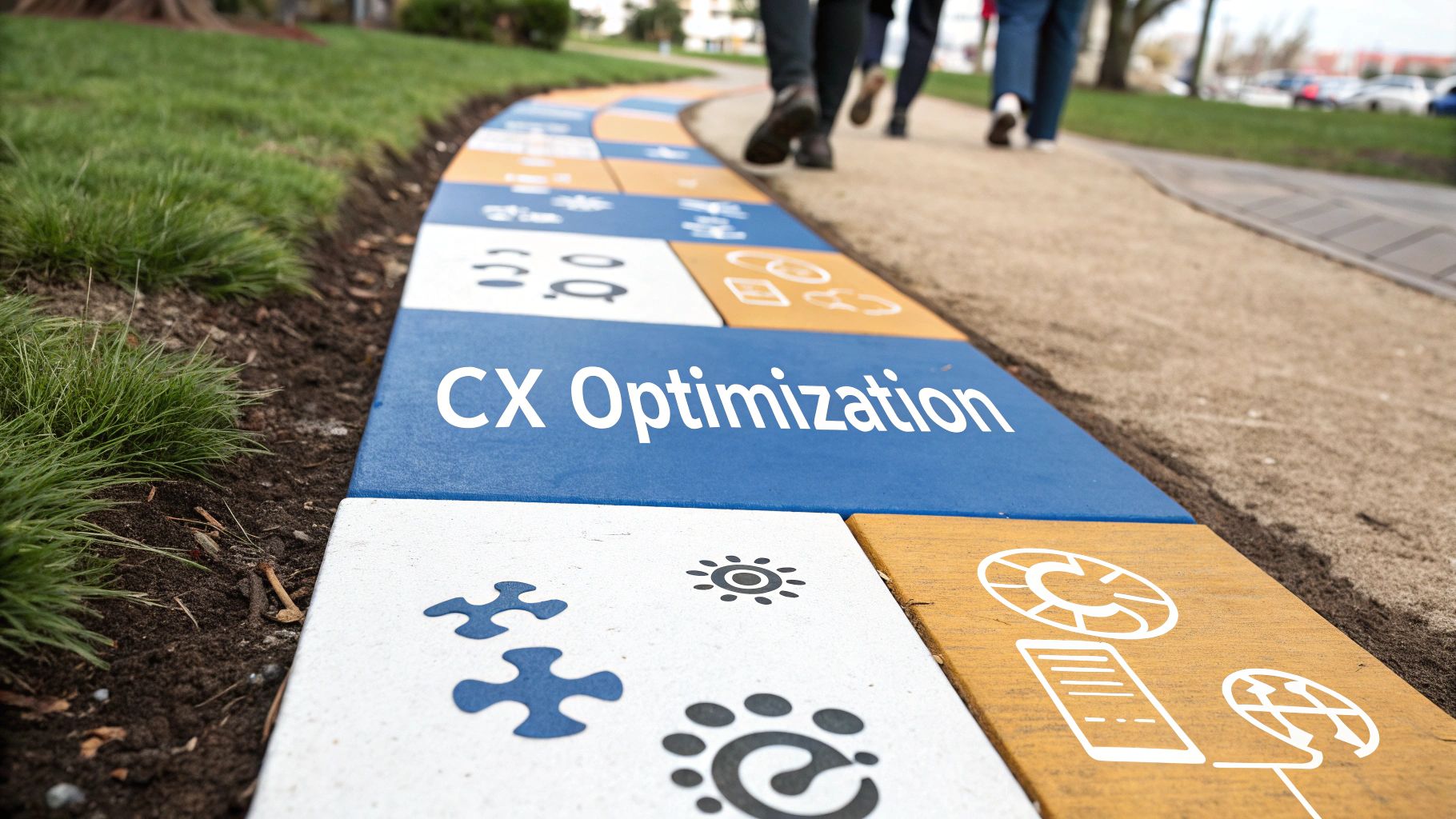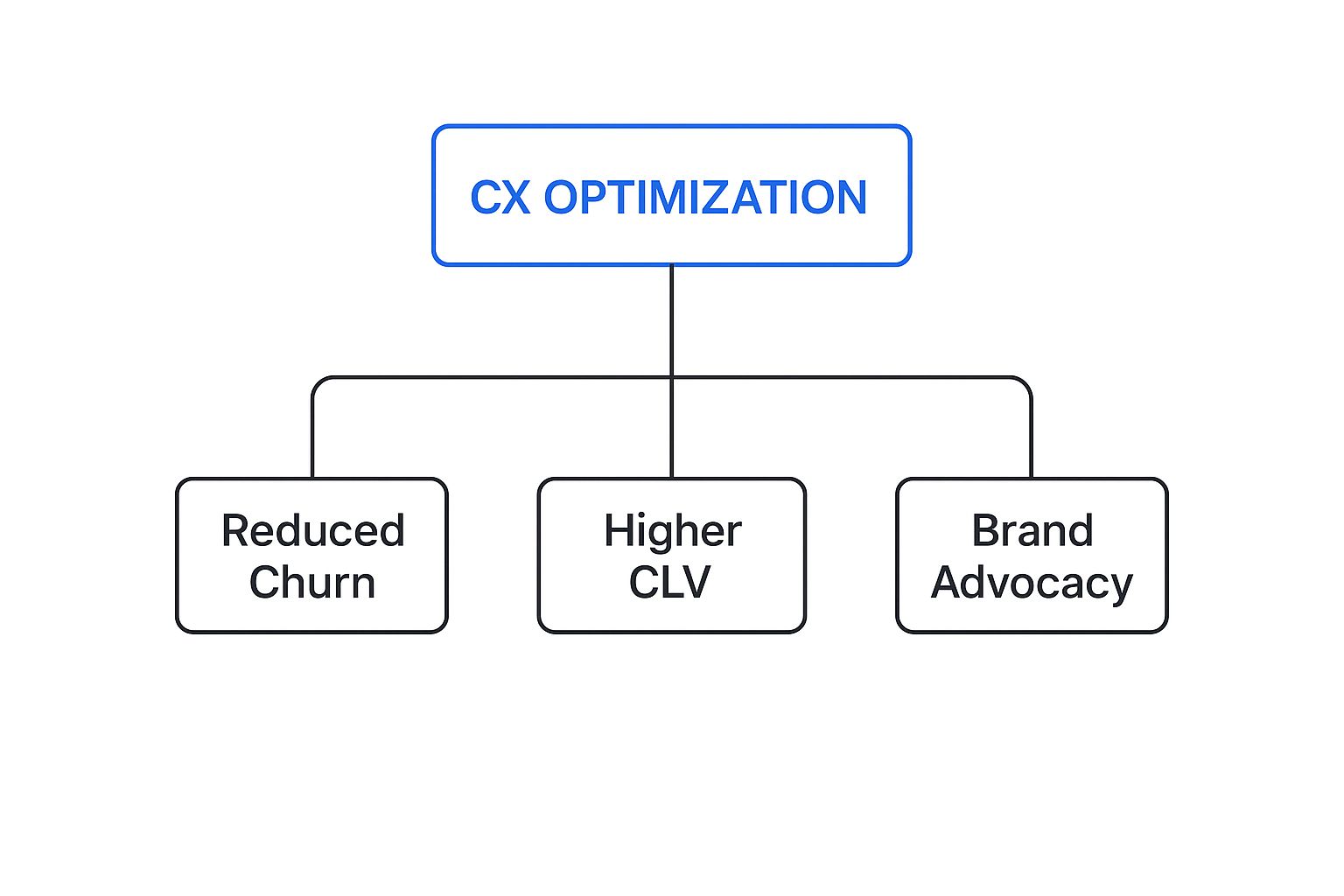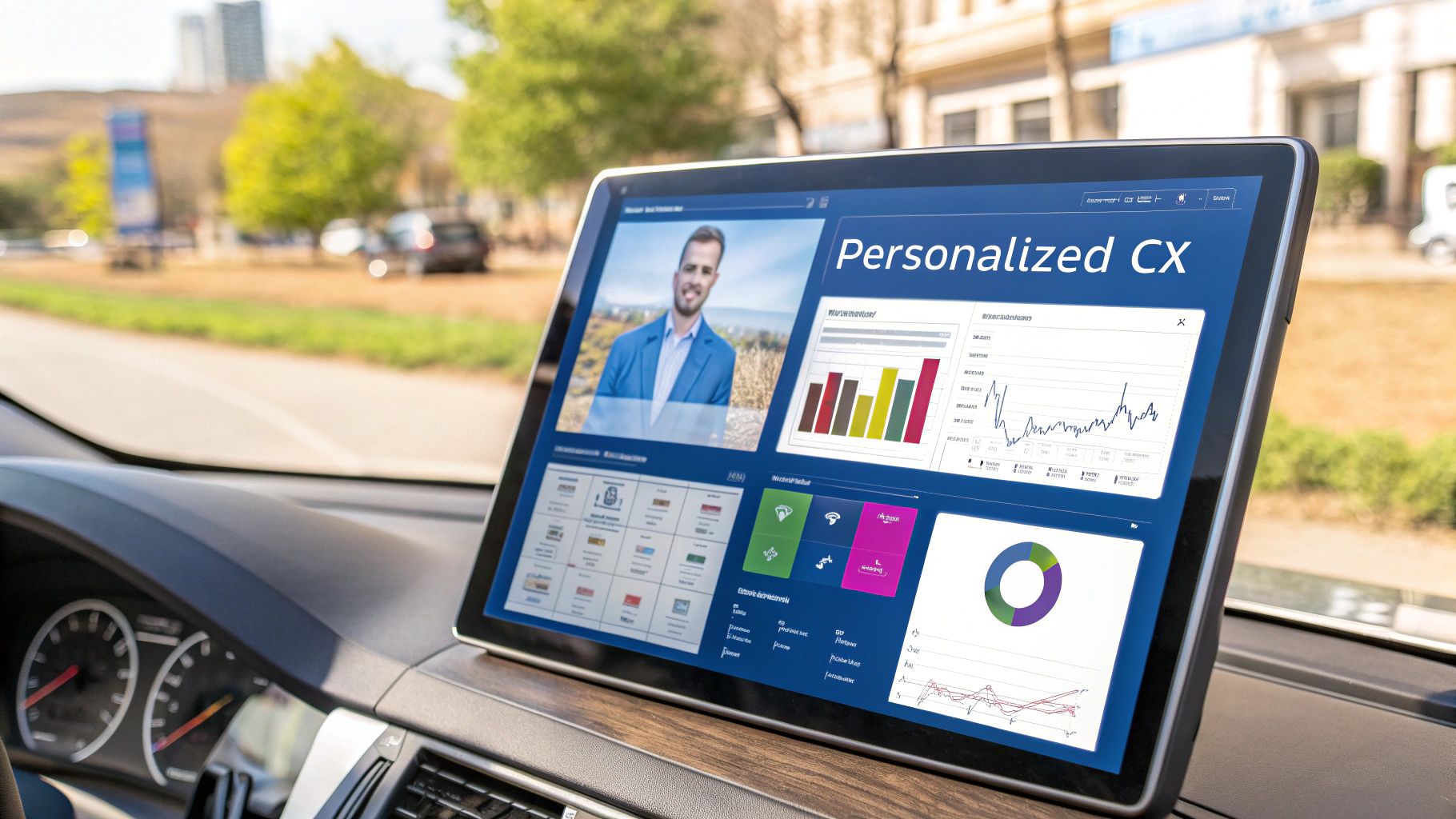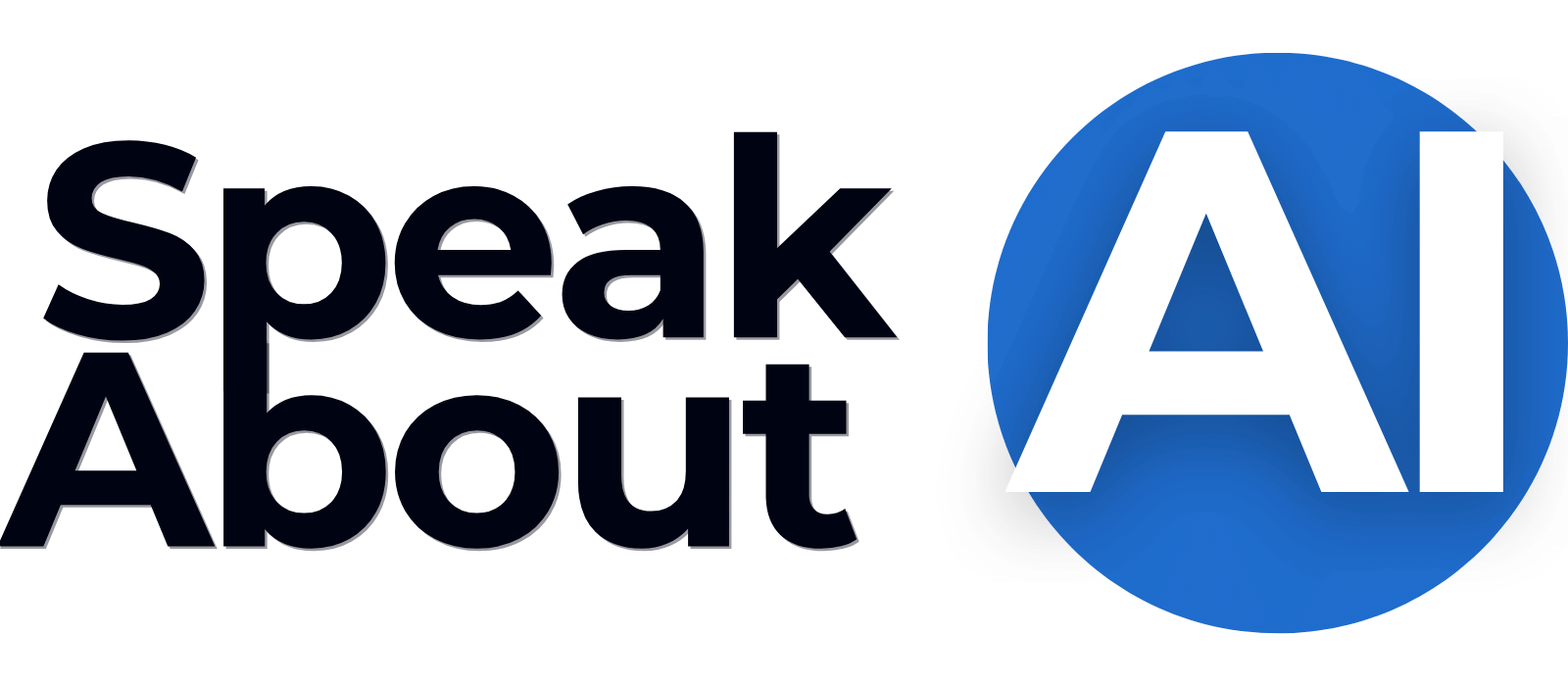Your Guide to Customer Experience Optimization

So, what exactly is customer experience optimization?
It’s the discipline of deliberately refining every single interaction a customer has with your brand to make it better than they expect. This isn’t about one-off fixes. It’s a continuous process of listening to feedback and watching customer behavior to make improvements that deepen satisfaction, earn loyalty, and create genuine fans.
Think of it as designing a journey that feels completely effortless and valuable at every turn.
What Is Customer Experience Optimization

Let's use an analogy. Imagine your business is putting on a big stage production, and the customer is the star of the show. Every interaction they have—from the first ad they see to a late-night support chat—is a scene in that play.
Customer experience optimization (CXO) is the art of directing that entire show to guarantee a standing ovation. It’s not just about fixing a wobbly prop on stage. It's about making sure the marketing, sales, and support teams are all working from the same script, creating a seamless and memorable performance.
The real goal here is to move past simply putting out fires. CXO is about proactively designing positive, memorable moments that build a real emotional connection. It’s what turns a simple transaction into a lasting relationship.
More Than a One-Time Project
Too many companies treat customer experience like a project with a start and an end date. But true CXO is a constant commitment. Why? Because customer expectations are always changing, shaped by new technology and trends. Optimization has to be a never-ending cycle of listening, analyzing, and improving.
This demands a deep, empathetic understanding of what your customers want and need at every single touchpoint. The process breaks down into a few key activities:
- Mapping the Journey: Get a clear picture of every step a customer takes with your company.
- Gathering Feedback: Use surveys, reviews, and real conversations to collect direct insights.
- Analyzing Data: Dive into customer behavior to spot friction points and hidden opportunities.
- Implementing Changes: Make smart, targeted improvements to your processes and products.
A huge piece of the puzzle is mastering customer journey orchestration. It's what makes sure every interaction feels connected and personalized, no matter the channel.
The Human Element in a Digital World
Even with all the automation available today, the human touch is what truly sets a brand apart. This is where top-tier customer experience speakers on our roster can offer incredible value. They bring fresh, expert perspectives on how to weave empathy and emotional intelligence into your strategy.
These experts share powerful insights on understanding customer psychology, empowering your frontline teams, and building a customer-first culture from the very top. Their guidance helps leaders see that customer experience optimization isn't just another metric on a dashboard; it's about making people feel seen, heard, and genuinely valued. By bringing these principles into your business, you can transform your customer journey from a predictable script into an award-winning performance.
Why Optimizing CX Is a Financial Imperative
Thinking of customer experience as a "soft" metric is a fast track to getting left behind. In reality, moving CX from a side project to the core of your growth engine isn't just a smart move—it's a financial necessity.
Great CX has a direct, measurable impact on your bottom line. It creates a powerful ripple effect that strengthens the entire business, separating the companies that merely survive from those that build a legacy of fiercely loyal customers.
On the flip side, the damage from a poor experience is both immediate and insidious. It shows up as customer churn, scathing online reviews, and a quiet drain on revenue that can sink even the most ambitious growth plans. Every frustrating phone call or confusing checkout process is a crack in your company's financial foundation.
The Hidden Costs of a Poor Experience
When a customer walks away unhappy, you lose more than a single sale. That one bad interaction triggers a cascade of financial consequences that are hard to track but devastatingly effective at undermining your business.
In fact, research shows that poor customer experiences cost businesses a staggering $4.7 trillion globally each year. In the United States alone, that translates into billions in lost revenue and tarnished reputations. You can dig deeper into the numbers in Nextiva's comprehensive customer service report.
This massive financial leak comes from two main sources:
- Customer Churn: We all know it costs more to acquire a new customer than to keep an existing one. When customers leave because they're frustrated, you don't just lose their future business—you have to spend a fortune on marketing and sales just to replace them.
- Negative Word-of-Mouth: Unhappy customers are loud. Their negative reviews and social media rants act as a warning sign to countless potential buyers, creating a drag on your sales funnel that's incredibly difficult to reverse.
The Financial Upside of Exceptional CX
The good news? Investing in customer experience optimization pays off, big time. Companies that get this right don't just stop the bleeding from customer churn; they turn satisfied customers into a powerful, sustainable growth engine.
Speaker, CX strategist Lisa M. Amos, puts it perfectly: "Your best customers leave a trail of clues... By paying attention, you can learn how to make your product, service, or business better."
It all comes down to actively listening to feedback and using those insights to smooth out every single touchpoint. When you do that, you build a loyal base that actively contributes to your financial health. This infographic breaks down exactly how optimizing the customer journey connects directly to your bottom line.

As you can see, a clear focus on CXO strengthens three pillars of financial success: it reduces churn, boosts customer lifetime value, and creates powerful brand advocacy.
The benefits are clear and financially potent:
- Increased Customer Loyalty: Happy customers stick around. A small 5% increase in customer retention can boost profits by an incredible 25% to 95%.
- Higher Lifetime Value (CLV): Loyal customers buy more, more often. They're also the first to try your new products, dramatically increasing their total value to your business over time.
- Powerful Brand Advocacy: Delighted customers become your best (and cheapest) marketing channel. They tell their friends, family, and colleagues about you, generating high-quality leads at virtually no cost.
Leading CX speakers on our roster emphasize that proactive, predictive support is the real game-changer. By anticipating what customers need before they even have a problem, you transform your support team from a cost center into a revenue-generating powerhouse. This forward-thinking approach makes one thing clear: customer experience optimization isn’t just an expense—it’s a non-negotiable investment in your company’s future.
The Six Pillars of an Unbeatable CX Strategy

A truly magnetic customer experience isn’t built on flashy tech or slick marketing alone. It’s grounded in a real, authentic understanding of human psychology. It’s less about clicks and conversions and more about forging an emotional connection that turns casual buyers into loyal fans.
This isn’t just a hunch. Recent global research from Ipsos revealed that a staggering 70% of customers choose brands simply because they expect a great experience. This expectation is built on six core human drivers: Certainty, Fair Treatment, Control, Status, Belonging, and Enjoyment. You can dive deeper into the data in Ipsos's 2025 global insights report.
Let's unpack what these pillars actually look like in the real world.
1. Certainty: The Foundation of Trust
At its heart, certainty is about getting rid of anxiety. Customers want predictability. They need to know what’s going to happen next, because when they do, they feel secure and confident in their decision to do business with you. Uncertainty, on the other hand, just creates friction and kills trust.
Ever ordered a package online and felt that knot in your stomach when the tracking just says "in transit"? That's a certainty gap.
- Real-World Application: Domino's Pizza Tracker is the gold standard here. They took a moment of potential anxiety—"Where's my pizza?"—and turned it into an engaging and oddly reassuring experience. It’s a masterclass in delivering certainty.
2. Fair Treatment: The Cornerstone of Respect
Nothing will torpedo a customer relationship faster than the feeling of being treated unfairly. This is all about making sure your policies, pricing, and support interactions are consistent and transparent for everyone. It’s a simple promise: you’ll do the right thing.
This becomes absolutely critical when something goes wrong. A clear, no-questions-asked return policy shows customers you value their satisfaction more than a single sale.
- Real-World Application: Zappos basically built its entire empire on this pillar. Their legendary 365-day return policy and empowered support agents—who can actually solve problems without a script—scream commitment to fairness.
3. Control: The Power of Empowerment
People want to feel like they’re in the driver’s seat. Giving customers control means offering them options, self-service tools, and the freedom to customize how they interact with you. When people feel empowered, they become more invested in the relationship.
This can be as simple as letting a user manage their own email preferences or as complex as offering a fully configurable product.
- Real-World Application: Subscription giants like Spotify and Netflix are masters of control. Users can curate their content, build playlists, and manage their accounts with zero friction. Upgrading, downgrading, or canceling is simple—no hoops to jump through.
4. Status: The Desire to Feel Valued
This isn’t about making customers feel like royalty; it’s about making them feel seen and heard. Status is about acknowledgment. It’s the loyalty program with perks that actually matter, the exclusive access, or just a simple, personalized thank you.
As speaker Bill Quiseng often advises, "Your most unhappy customers are your greatest source of learning."
When you actively listen to feedback and show customers their opinions are shaping your business, you elevate them from a transaction number to a valued partner.
5. Belonging: The Need for Community
As humans, we’re wired for connection. The pillar of belonging is about creating a sense of community around your brand. When customers feel like they're part of a tribe—a group of people who share their values and interests—their bond with your brand becomes incredibly deep.
This sense of community is powerful. As our roster of [sales and marketing AI speakers](https://speakabout.ai/industries/sales-marketing-ai-speakers) often point out, it can transform customers into your most passionate advocates.
- Real-World Application: Look at what Harley-Davidson has done. They didn’t just sell motorcycles; they built a global community. The H.O.G. (Harley Owners Group) creates a powerful sense of identity and belonging that transcends the product itself.
6. Enjoyment: The Element of Delight
Finally, the experience needs to be enjoyable. This doesn't mean every interaction has to be a party, but it should be as smooth and pleasant as possible. Enjoyment is often found in the little things: a beautifully designed app, a clever bit of copy, or a support agent who makes you laugh.
It’s about seizing opportunities to inject small moments of delight into the customer journey, turning something mundane into something memorable.
To tie this all together, here’s a quick breakdown of how these emotional drivers translate into tangible business actions.
The Six Pillars of Emotional Customer Connection
| Pillar | Definition | Business Application Example |
|---|---|---|
| Certainty | The need for predictability and transparency to reduce anxiety. | Providing real-time delivery tracking for an e-commerce order. |
| Fair Treatment | The belief that policies, pricing, and support are consistent and equitable. | Offering a no-hassle, 30-day return policy for all customers. |
| Control | The feeling of empowerment through options and self-service capabilities. | Allowing users to easily customize their software dashboard. |
| Status | The sense of feeling recognized, important, and valued by the brand. | Creating a tiered loyalty program with exclusive perks for top customers. |
| Belonging | The feeling of connection to a community of like-minded people. | Hosting user forums and local meetups for brand enthusiasts. |
| Enjoyment | The experience of positive emotions, delight, or ease during interactions. | Adding witty, helpful microcopy to a website's loading screens. |
By consciously building these six pillars into your strategy, you move beyond simply satisfying customers. You start creating genuine, lasting connections that fuel growth and build a brand people truly love.
How to Measure Customer Experience Effectively
You can't fix what you can't see. For any customer experience optimization strategy to actually work, you have to get beyond gut feelings and start tracking the right numbers. These aren’t just fancy acronyms; think of them as the vital signs of your customer relationships.
Each metric tells you a different part of the story. Some track big-picture loyalty over the long haul, while others zoom in on how a customer felt in a single, specific moment. Nailing the role of each one is the first step toward building a CX dashboard that gives you clear, actionable insights instead of just a pile of data.
Core Metrics for CX Optimization
To get a real feel for what your customers are thinking, you need the right Customer Experience Measurement Tools. Most of these tools revolve around a few core metrics that have become the bedrock of modern CX programs.
Here’s a quick look at the "big three" you absolutely need to know.
- Net Promoter Score (NPS): This one is all about long-term loyalty. It boils everything down to one powerful question: "On a scale of 0-10, how likely are you to recommend our brand to a friend?" NPS sorts your customers into Promoters (9-10), Passives (7-8), and Detractors (0-6), giving you a bird's-eye view of your brand's health.
- Customer Satisfaction (CSAT): Think of CSAT as a snapshot of short-term happiness. It measures how a customer feels right after a specific interaction, like a support call or a purchase. By asking, "How satisfied were you with your recent experience?" on a simple scale (like 1-5), you get immediate feedback on individual touchpoints.
- Customer Effort Score (CES): This metric gets straight to the point: how easy was it for your customer to get something done? CES asks customers how much work they had to put in to resolve an issue. A low-effort experience is one of the strongest predictors of whether a customer will stick around.
These metrics are fantastic for understanding individual interactions, but they don't paint the complete picture on their own. To see if your efforts are truly paying off, you have to connect them to the financial health of the business.
This concept is echoed by a speaker Shep Hyken, who states: "Data is the new oil. It’s valuable, but if unrefined it cannot really be used."
This is where leading CX speakers really shine. They don't just talk about the numbers; they teach teams how to refine that raw data, showing them how to draw a straight line from a rising NPS score to tangible business growth.
Comparing Key Customer Experience Metrics
To help you decide which metric to use and when, here’s a simple table breaking down what each one measures and where it works best.
| Metric | What It Measures | Primary Use Case |
|---|---|---|
| NPS | Overall brand loyalty and willingness to advocate. | Tracking long-term relationship health and predicting growth. |
| CSAT | Immediate satisfaction with a specific interaction or touchpoint. | Getting quick feedback on service, product, or purchase experiences. |
| CES | The ease or difficulty a customer experienced to resolve an issue. | Identifying and removing friction in customer service processes. |
Each metric offers a unique lens. The key isn't to pick just one, but to use them together to get a well-rounded view of your entire customer journey.
Connecting CX Metrics to Business Health
A great CX score is nice, but it only really matters if it leads to a healthier bottom line. Two key indicators bridge the gap between customer feelings and financial reality.
1. Customer Churn Rate
This is the percentage of customers who walk away from your business over a set period. It’s a direct, unfiltered reflection of customer dissatisfaction. If your churn rate is climbing, it’s a massive red flag that your experience has some serious problems that need to be fixed—fast.
2. Customer Lifetime Value (CLV)
CLV is a prediction of the total revenue you can expect from a single customer over the entire course of your relationship. A high CLV is the ultimate prize for great customer experience optimization. It’s stone-cold proof that happy, loyal customers don't just stay longer—they buy more and are far more profitable over time.
By tracking these five metrics in tandem, you build a 360-degree view of your CX performance. This balanced scorecard ensures you're not just making customers happy today, but building the kind of deep, durable loyalty that fuels real, sustainable growth.
Using AI and Personalization to Elevate CX

Technology is the engine that powers modern customer experience optimization. It’s what allows businesses to finally move beyond clumsy demographic buckets and into the world of true one-to-one personalization. This isn't just a "nice-to-have" anymore; it's about meeting a new, non-negotiable expectation for relevance.
At the heart of this shift is artificial intelligence. AI gives companies the ability to understand and even anticipate customer needs at a scale that was pure science fiction just a decade ago. Done right, AI becomes the bridge between mountains of customer data and genuinely meaningful, personal interactions.
The Power of Hyper-Personalization
In the past, "personalization" might have meant sticking a customer's first name into an email template. Today, it’s about creating entire journeys that adapt in real time to each individual. The leading AI and customer experience speakers on our roster consistently drive home this point: use data to orchestrate a path, not just to insert a name.
This means using AI algorithms to analyze everything from browsing history and past purchases to real-time clicks. The goal is to deliver perfectly timed, relevant content that feels less like a sales funnel and more like a helpful conversation.
Think of an e-commerce site that does more than just show you products you’ve already seen. Instead, its AI understands your style and suggests complementary items you might love—before you even know to search for them. That’s the magic of AI-driven personalization in action.
The New Era of Customer Support
One of the most immediate ways AI impacts the customer experience is in support and service. Today's customers want answers now, not tomorrow, and AI-powered tools are making that instant gratification possible. By automating responses to common questions, businesses can offer 24/7 support without burning out their human agents.
This is a massive priority for companies focused on customer experience optimization. Personalization is now a top strategic goal, with nearly 50% of companies worldwide making it a primary focus for their 2025 CX investments. Data from Desk365 shows that 44% of businesses are pouring money into data integration and analytics to make this happen, while 43% are using AI and chatbots to get faster and more efficient. For a deeper dive, you can find additional customer experience statistics here.
These tools deliver two huge wins:
- Instant Gratification for Customers: AI chatbots and smart self-service portals can solve simple problems in seconds, meeting the modern customer’s need for speed.
- Empowerment for Human Agents: With routine questions handled by AI, your support team is freed up to tackle the complex, high-value, and emotionally charged issues where their empathy truly shines.
As a speaker and AI expert Dr. A.I. Sürücü notes, "The best AI systems will be the ones that are designed to complement and augment human capabilities, not replace them. The goal is to create a seamless partnership between humans and machines."
This smart blend of automated efficiency and human expertise is the bedrock of any modern CX strategy.
Striking the Right Balance
While AI offers incredible tools for scale and efficiency, the smartest companies know that technology alone isn't the answer. The goal is never to replace human connection but to supercharge it. Let AI handle the heavy lifting of data processing and routine tasks, freeing up your team to do what they do best: build real relationships.
For example, an AI can flag a high-value customer who seems frustrated based on their on-site behavior. This allows a skilled human agent to proactively reach out with a personal touch, turning a potential complaint into a moment that builds serious loyalty. Our AI keynote speakers often point to this synergy as the key to unlocking AI's real value.
Figuring out how to blend technology with a human touch takes careful planning. If you're wondering where to even begin, you might find our guide on how to implement AI successfully in your business helpful. It offers practical steps for weaving these powerful tools into your existing operations.
Ultimately, using AI and personalization isn't about creating a cold, robotic customer journey. It’s about using technology to know your customers so well that you can deliver the right message, on the right channel, at the perfect time—all while preserving the invaluable human element that builds lasting trust.
Your Path to Customer-Centric Growth Starts Here
Treating customer experience optimization as a one-and-done project is a common mistake. True customer-centric growth is a mindset, a continuous commitment to forging real emotional connections that go far beyond a simple purchase or a closed support ticket. The goal is to build a brand that people don't just use, but one they genuinely trust and recommend.
But you don't need a massive, company-wide overhaul to get started. Just pick one thing. Map out your customer's journey from start to finish and find a single, obvious point of friction—a confusing checkout button, a slow-loading page, or a policy that makes no sense. Your only mission this month? Fix that one thing.
Gaining Momentum with Expert Insight
Once you’ve notched your first win, choose one core metric to track, like Customer Satisfaction (CSAT) or Net Promoter Score (NPS). This creates a simple feedback loop that builds momentum. As you look to scale these efforts, the real acceleration happens when you bring in expert guidance.
Our roster of leading AI and customer experience speakers provides the strategic frameworks and real-world case studies you need to build a truly customer-centric culture. These experts help leadership teams get inside the heads of their customers and align operations to meet their needs.
"The best way to find out what your customers want is to ask them," is a principle our speakers often share. "The second-best way is to watch them.”
As you grow, their insights can guide the integration of AI-powered tools that personalize journeys and even predict what a customer will need next. Of course, keeping your teams skilled and aligned is crucial for this to work, which is why continuous education is so important. You can learn more about this in our guide to improving corporate learning and development.
Start treating customer experience optimization as your primary growth lever. When you do, you’ll build a resilient brand that doesn't just survive market shifts—it thrives because of the loyalty of its customers.
Got Questions About CXO? We've Got Answers.
When you're diving into customer experience optimization, a few questions always pop up. Here are some straightforward answers to the ones we hear most often, designed to give you the clarity you need to get started.
What's the Real First Step in Customer Experience Optimization?
Before you can optimize a single thing, you have to map the entire customer journey. I mean really map it. You need to develop a deep, almost obsessive understanding of every touchpoint a customer has with your brand—from the moment they first hear about you to the follow-up email they get after a support call.
This isn't just about crunching data. It's about getting direct feedback from your actual customers through surveys, reviews, and real conversations. A solid journey map will immediately show you where the frustrating roadblocks are and where those little moments of delight happen. Those are your targets for optimization.
How Can a Small Business Actually Do CXO?
Small businesses can punch way above their weight here by focusing on high-impact, low-cost moves. It all starts with listening. Get on social media, see what people are saying, and respond—quickly and like a real person. Even a simple, one-question email survey after a purchase can uncover gold.
"True customer loyalty isn't bought, it's earned through a thousand tiny, thoughtful interactions," notes one of our CX strategists. "Small businesses have a natural advantage here—they can make every customer feel seen and valued in a way large corporations often struggle with."
Another huge win? Empowering your team. Let them solve customer problems on the spot without needing to follow a rigid script. These foundational efforts build incredible trust and don't require a massive tech budget.
What's the Difference Between Customer Service and CX?
People mix these up all the time, but the difference is critical. Let's break it down with an analogy.
- Customer Service is one piece of the puzzle. It's reactive. It’s what happens when a customer has a specific problem and reaches out for help.
- Customer Experience (CX) is the entire puzzle. It’s the sum total of every single interaction someone has with your company—your ads, your website's checkout process, the quality of your product, and, yes, your customer service.
Our keynote speakers often say that great CX is about proactively designing a better journey from the start, not just being great at fixing things when they break. It's about making the whole experience so smooth that customers rarely need to contact your service team in the first place.
Ready to bring world-class insights on customer experience optimization to your next event? Explore the roster of expert speakers at Speak About AI and find the perfect voice to inspire your team. Book a leading AI and CX speaker today!
